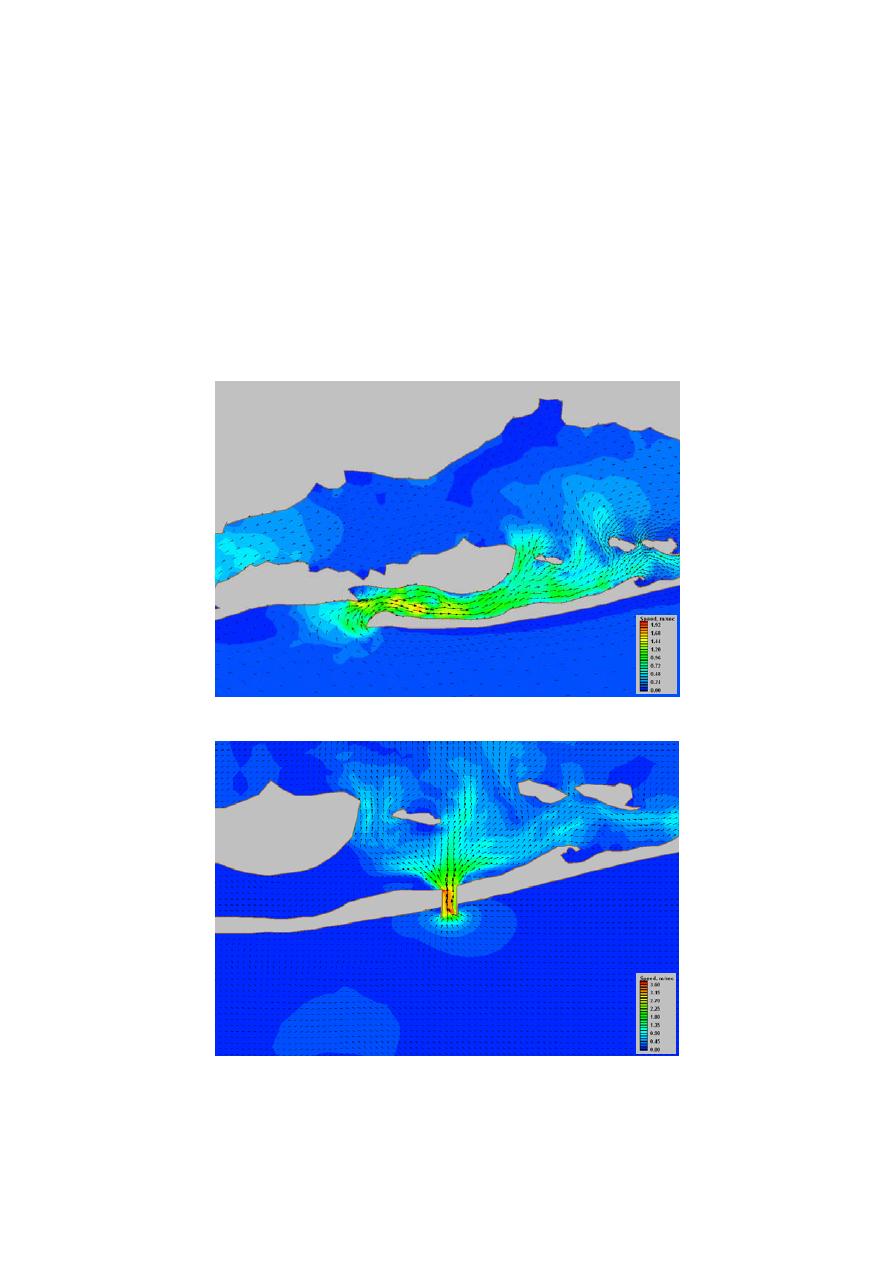
change; and (d) elimination of natural bay bottom by the footprint of the new flood
shoal. If a new inlet is cut, the perimeter of the bay, estuary, or lagoon that it connects
to the ocean will experience a change in water level, circulation pattern, and, perhaps,
salinity, under both typical and storm sea conditions. These responses are readily
evaluated with numerical simulations models of tidal circulation and storm surge (e.g.,
Brown and Militello 1996; Kraus et al. 2003). Results will depend on the existence of
other inlets to the bay system, relative cross-sectional areas and locations of the other
Figures 4a and 4b give an example of calculation of the tidal circulation for hypothetical
relocation of Fire Island Inlet, New York.
Existing Condition
Peak Flood
Fig. 4a. Existing inlet
New Inlet
Peak Flood
Fig. 4b. Hypothetical relocated inlet
9





 Previous Page
Previous Page

